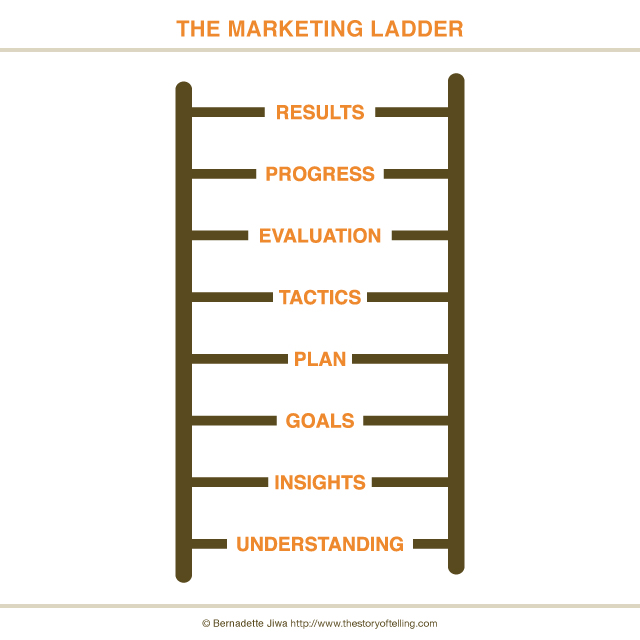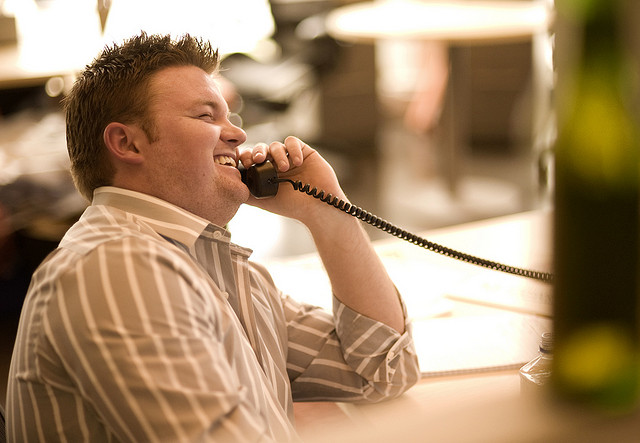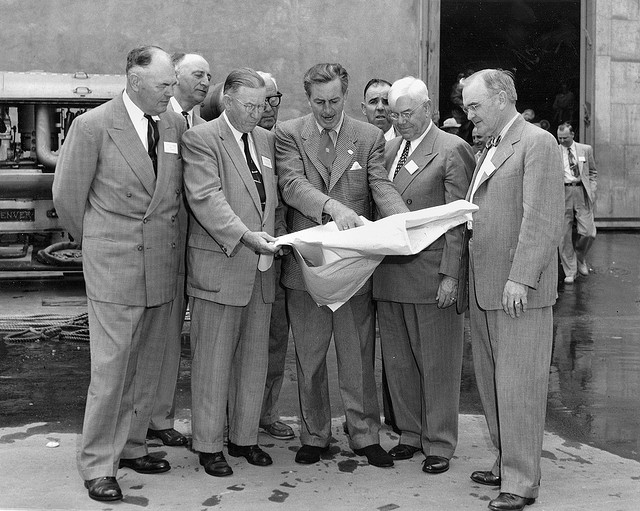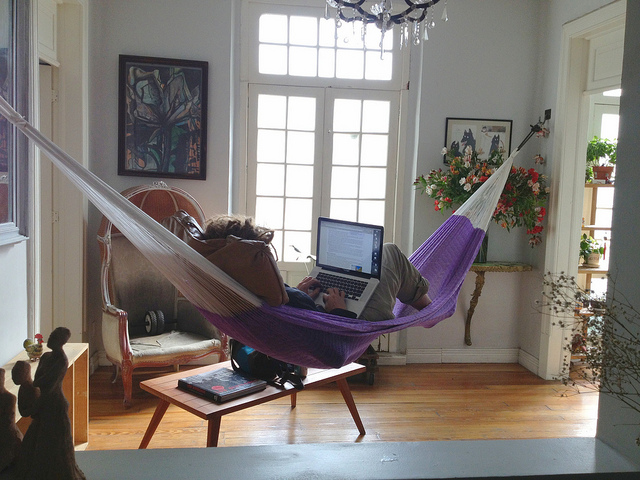Unlock the Magic in Your Story Now
Get the Free 20 questions to Ask Before Launching Your Idea workbook when you sign up for occasional updates.
Get the Free 20 questions to Ask Before Launching Your Idea workbook when you sign up for occasional updates.
Articles filed in: Marketing
The Value Of What We Don’t Know
filed in Marketing, Storytelling, Strategy
 Six years. That’s how long it took IKEA to research the South Korean culture before they were ready to open the first store there. Six years of understanding what they didn’t know about the story Korean customers lived and wanted to believe—so that they could tell a story that resonated.
Six years. That’s how long it took IKEA to research the South Korean culture before they were ready to open the first store there. Six years of understanding what they didn’t know about the story Korean customers lived and wanted to believe—so that they could tell a story that resonated.
The goal wasn’t to reinvent what was working for the company, but to find commonalities, ways in which their values and solutions aligned with customers’ worldviews. Products can be the same but worldviews are unique. That’s why the IKEA catalogue is produced in 67 different versions.
Our expertise is worthless without understanding the context in which customers will experience it.
Image by Daniel Lee.
The ‘Only’ Metric
 We often downplay our effort or achievement by using the metric of ‘only’.
We often downplay our effort or achievement by using the metric of ‘only’.
only made a handful of sales.” “Our site only gets 100 visitors a day.”
The only metric devalues those people who have given you their permission, their time or money—some of the scarcest resources they have.
That only is a reason to keep going and a chance to learn from your mistakes.
It’s the opportunity to practice being grateful for every one of those people who took time out of their busy day to open your email.
Apple only sold 125,000 iPods in 2001. Those buyers were Apple’s most important customers in a decade, because without them they would never have reached 350 million iPod sales by 2012.
Yes, set goals and have targets around what you need to create a sustainable business.
Remember if you’ve found a way to impact one person today, tomorrow that will be two, and more isn’t the only metric that matters.
Image by Jason Staten.
Why You Need To Abandon The ‘Everyone’ Mindset
filed in Marketing, Storytelling, Strategy
 I recently got an email that began….
I recently got an email that began….
‘Hi everyone,’
I didn’t make it past the second word and your customers won’t either.
We are too busy, distracted, tired, wary, focused, selfish, savvy or [fill in your blank here], to care about something that’s for everyone. The only messages that get through are the ones that are intentionally created for you.
1970s TV adverts were for everyone. This was a time when a few big brand players garnered mass audiences, saturated the market and dominated. And while some brands are still playing that game, many more have carved out profitable niches by doing exactly the opposite and talking to ‘someone’ instead.
This thinking is not new of course, but it’s not been leveraged half as much as it should be.
One of the most renowned copywriters in advertising history Bob Levenson, who began his career at New York agency DDB in 1959 shared a little about his process:
“I always started by writing Dear Charlie, like writing to a friend. And then I would say what I had to say, and at the end I would cross out Dear Charlie, and I was all right.”
—Bob Levenson
Today Beardbrand generates $120,000 a month in sales by talking to someone.
Black Milk Clothing has built a community of evangelists and global brand by talking to someone.
The indie innovators of Flow Hive have raised $5 million and counting by telling a story to someone.
They didn’t start with the advantage of a huge marketing budget that enabled them to reach everyone. Where they each began was with a story that resonated deeply with the people who mattered. It worked because they were speaking just to them. And the flip side is you have to take time to know that someone before you can craft a meaningful message.
Image by David Phan.
Before And After
filed in Marketing, Storytelling, Strategy
 Before any business is done you and your potential customer each have a story playing in your head.
Before any business is done you and your potential customer each have a story playing in your head.
There is the worldview you each have before the transaction takes place and the outcome you hope will eventuate afterwards. The outcome that you want and the one that the customer is hoping for may be two totally different things.
The closer you get to aligning your goals—to closing the gap between your desired outcome and the customer’s, the greater the chance you have of succeeding.
Three questions for you then:
1. What’s your potential customer’s ‘before’ story?
2. What’s the ‘after’ she is hoping for?
3. Can you deliver on her desired outcome?
It’s worth spending some time to work this out before you try to enrol her..
Image by Chris Brown.
*Thanks to Seth for the nudge on this one.*
Where Marketing Starts And The Marketing Ladder
filed in Marketing, Storytelling, Strategy
 For many business owners marketing begins with tactics. Someone suggests that printing flyers or making a ‘viral’ video to get the word out is a good idea.
For many business owners marketing begins with tactics. Someone suggests that printing flyers or making a ‘viral’ video to get the word out is a good idea.
Even if the tactic works this time round it doesn’t mean you’ve got a sustainable strategy for connecting with your audience or building your brand.
Think of marketing as a ladder where you make progress from bottom to top.

Understanding comes before insights, goals before a plan.
Tactics come before evaluation, which leads to progress that then drives results.
The best way to navigate a ladder is one rung at a time. Sure—you can try climbing it faster two at a time, but you’re more likely to break your neck that way. And it’s impossible to make progress by starting in the middle. Shouting from any point on the ladder doesn’t work either.
Once you know where you’re going and why it’s a lot easier to get there.
Image by Bill Selak.
What We Value And Reward Defines Us
filed in Marketing, Storytelling, Strategy
 Brian has a tough gig. He works at a call centre for an Internet service provider. You can probably imagine what his day looks like. When we spoke I could hear background noise that sounded like hundreds of other people in a tiny space doing exactly what Brian was trying to do—close the sale.
Brian has a tough gig. He works at a call centre for an Internet service provider. You can probably imagine what his day looks like. When we spoke I could hear background noise that sounded like hundreds of other people in a tiny space doing exactly what Brian was trying to do—close the sale.
Brian spoke really fast, was trained to interrupt when he had enough information to progress the call and to offer the contract that locked people in for two years, unless they asked about the ‘no lock in’ offer. His every action and reaction was a means to a single end. He became anxious when it looked like the sale might slip away when said I didn’t have enough information to make a decision there and then.
“Please don’t call back, or speak to anyone else at [company name]!!
I’d appreciate it if you could respect my situation and the hard work I have done here today.
Let me call you back later today.” he said.
In the eight hours between calls I did a quick Google search for reviews of the company’s service (yes, this is exactly where I should have started—lesson learned). 907 one star reviews don’t lie. Brian tried to explain them away when he called back to close the sale before his long shifted ended. Even though he knew it was hopeless he didn’t stop trying until the bitter end.
None of this is Brian’s fault of course. His way of operating on every sales call is directly related to the type result and reward culture that has been created by the company. Here is a company that celebrates and rewards employees for closing the sale. It’s clear that this is what they prioritise, measure and value. The value of every caller is heightened in the ten minutes before they become a customer. Brian is doing what his boss wants him to do because that’s how he has been trained to survive. Growing the number of sales closed at any cost is how his boss survives too.
Our beliefs and behaviours define our cultures. What we value becomes more valued. What is reinforced drives everything we do, how we show up and who becomes our customer. Above all else this is what shapes our story and no marketing whitewash can stop that being reflected to the outside world.
You get to choose the culture you want to create. You create it by demonstrating that above all else—THIS is what we care about. What do you care about and does it show?
Image by twowest.
The Myth Of The Captive Audience
filed in Marketing, Storytelling, Strategy
 Maybe you read the recent article on Entrepreneur.com about digital advertising trends that included the following passage?
Maybe you read the recent article on Entrepreneur.com about digital advertising trends that included the following passage?
“Mobile video viewers are what you might call a “captive” audience. When TV commercials begin, people look down at their phones. On the bus or subway, people focus on their digital screens instead of the ads passing by in the cityscape. When radio ads begin, people change the station. However, when people are already looking at their smartphone, nothing is going to distract them. Use mobile video ads to take advantage of this undivided attention.”
Two phrases jump out ‘captive audience’ and ‘take advantage’.
Isn’t it time we stopped using language that alludes to deceit and domination when we think and talk about how to engage with our audiences and our customers?
These are the people who buy the things we make. They are the people who give us a reason to get up in the morning. They keep the lights on at our offices and shoes on our kids’ feet. They have needs and hopes and dreams beyond our sales goals and quarterly projections. Their attention, support and loyalty are on loan to us.
And they do have choices—more now than ever.
Our job should never be to take advantage of people who have no choice. Where’s the fulfilment in that? Our job is to understand and give to the people we want to matter to. This is the way to patiently build a sustainable business and a legacy. It truly is possible and it’s worth it.
Nothing worthwhile, lasting, impactful or loved was built by taking advantage of people who had no choice but to stand there and take it. Nothing.
Image by Chris Guillebeau.
If We Build It Will They Come?
 This is precisely the wrong question to start any project with.
This is precisely the wrong question to start any project with.
A better way to begin is by asking:
Who wants us to build it and why will they come?
*This photo of Walt Disney showing the Disneyland plans to Orange County officials was taken in Dec 1954.*
Walt knew where to start.
Image from the Orange County Archives.
A Lesson In Unlocking Value
 When you book a room at the Hilton or the Hyatt you either have a pleasant conversation with someone in a call centre who you will never hear from again, or you get a polite, well-crafted email in your inbox. Your expectation about the experience is based on the photos from the website and the reviews on Trip Advisor. No value is created at the time of booking. It’s a transaction. Nothing very meaningful is exchanged.
When you book a room at the Hilton or the Hyatt you either have a pleasant conversation with someone in a call centre who you will never hear from again, or you get a polite, well-crafted email in your inbox. Your expectation about the experience is based on the photos from the website and the reviews on Trip Advisor. No value is created at the time of booking. It’s a transaction. Nothing very meaningful is exchanged.
When you enquire about a room on Airbnb you’re encouraged to reach out to the host by telling him your story.
“Tell John a little about yourself.
What brings you to Melbourne? Who’s joining you?
What do you love about this listing? Mention it!”
You are already investing in the connection with John (not just his apartment) right out of the gate. Contrary to what some believe, the Airbnb platform is not just about access, it’s about fostering connectedness from the first interaction. A ton of value is intentionally created because of the interactions guest and hosts have before the booking is made and the guest arrives. Trust and empathy are exchanged and felt along with check in instructions—which it turns out are secondary.
Business analysts comment that Airbnb unlocked the latent value in unused spaces. True—but the greater value they deliver is a sense of belonging for travellers. They are helping to redefine what hospitality should be, beyond room service and a quiet place to sleep for the night.
The reason a 5 star hotel can’t compete is because it’s tough to create meaning at scale.
The business that does will always be out front.
There are a dozen opportunities for you to unlock value before your customer walks through your door? Start with one—see where it leads you.
Image by Calitexican.
 A pitch is what you tell the world about you. It’s presented as the polished version of your story. The one you hope people will grasp and believe within a few short minutes as they reach for their wallets.
A pitch is what you tell the world about you. It’s presented as the polished version of your story. The one you hope people will grasp and believe within a few short minutes as they reach for their wallets.